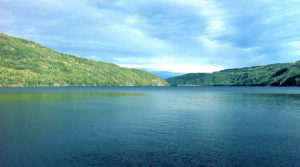How the NetBeans Module System Helps Us Maintain Compatibility Between Releases
Two decades after its creation, the Java runtime has finally become modular. A modular approach not only makes dependency management easier, but it also makes applications more efficient as unused modules don’t need to be loaded. The NetBeans Platform predates Java 9 and has been using its own module system for years. Since INTViewer is a desktop application built on top of the NetBeans Platform, I find that it is far superior to the Java 9 module system for my use cases.
What Cloud Data Lakes Mean for Geoscience
With the explosion of storage capacity, cloud computing, and bandwidth availability, a trend has emerged in the oil and gas industry over the last few years. Data that was previously aggregated and discarded is now maintained and stored, creating an opportunity for the industry. Coupled with new advancements in machine learning and Al, this data availability is poised to drive more data driven decision making in well planning, drilling & completions, and well operations.
Enterprise Data Visualization: A Critical Component of Your E&P Digital Platform
Traditionally, the oil and gas sector has been slower than other industries to adopt new software and technology. When the market is doing well, companies have little time or motivation to invest in change. When the market is bad, companies lack the appropriate resources and budget. Since 2015, the oil and gas sector has experienced significant changes. An aging workforce, low oil market price, and the pressure to transition to cleaner energy are among the many factors forcing the Exploration and Production industry to rethink how it works, recruits, trains, and operates in order to stay in business.
How to Add Overlay to Visualize Data from ArсGIS Feature Service
In this post we consider how to display data, which includes geometry and nonspatial information like names from ArcGIS ESRI services using the GeoToolkit.JS Map Widget and WMTS data from OpenStreetMap.





